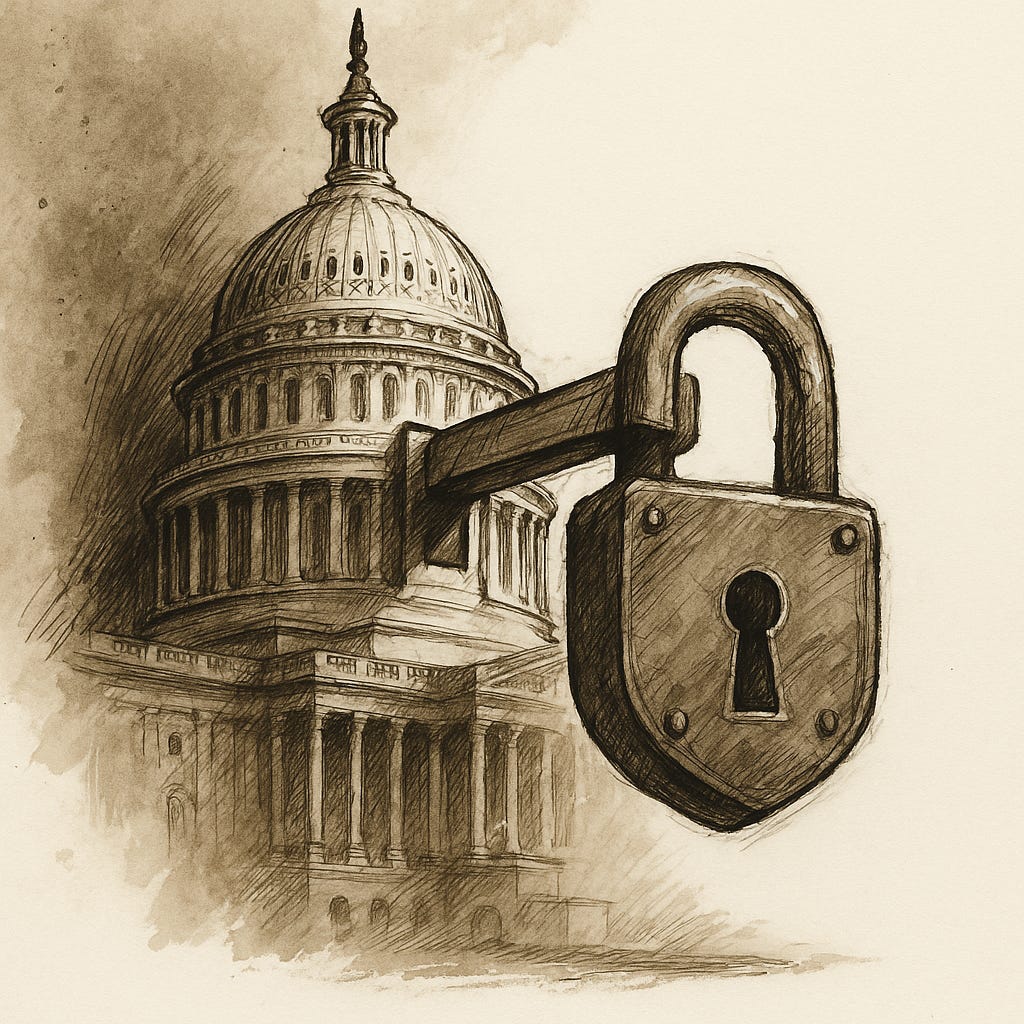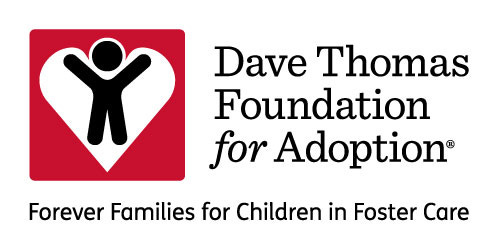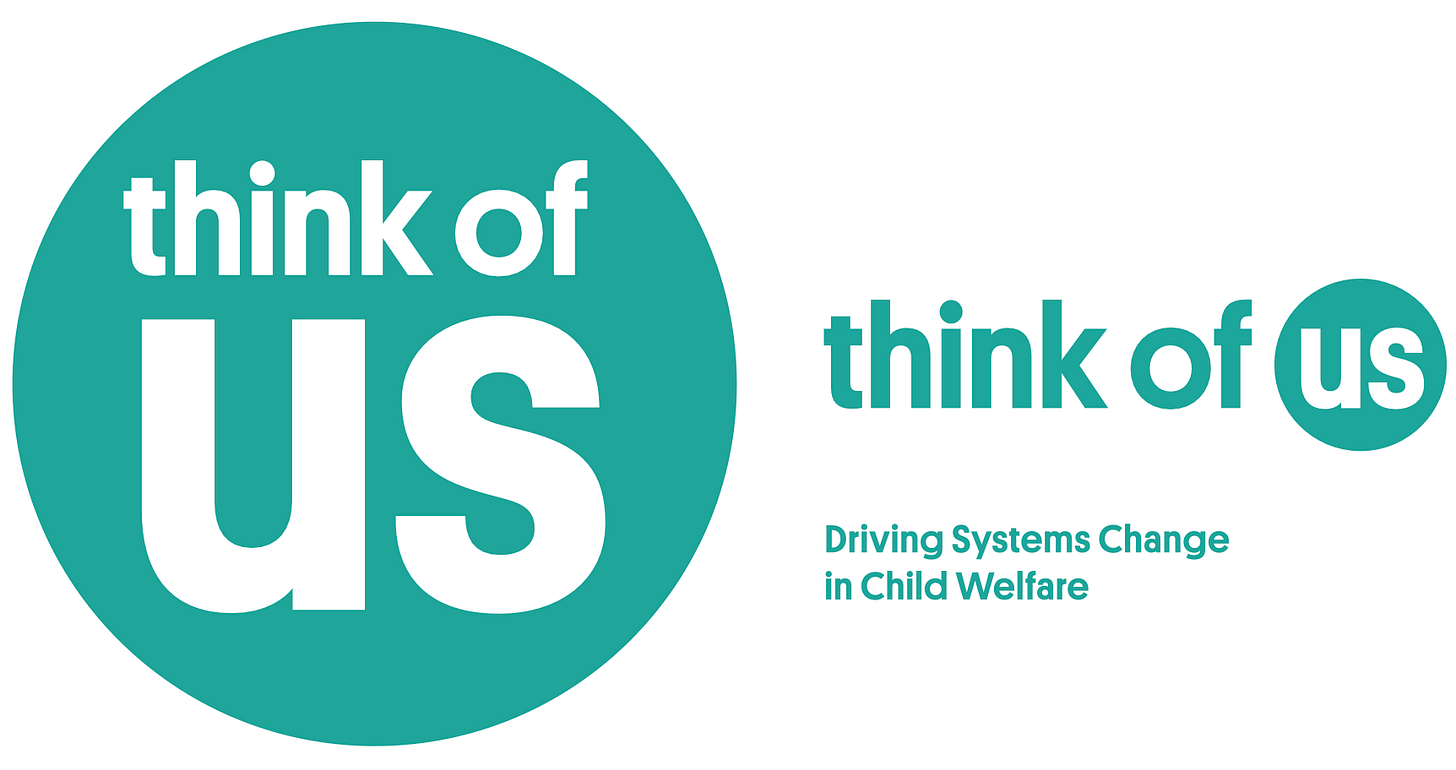Weekly Wonk: Why This Shutdown May Be Different
From the Founder’s Desk
Welcome, Wonks.
Shutdowns used to be more about showdowns. The same incentives that created the tension also forced mutual interest in its resolution.
Now we have one looming for midnight tomorrow that does not follow the typical patterns of escalation and brinksmanship.
This week’s deep dive traces and translates that volatility, breaking down what it may mean for your priorities in child and family policy.
We’ve also got an excerpt of our most recent premium brief; a strategic map of the power centers that matter for child and family policy in the Trump Administration.
What ties them both together is they are designed to help you strategically navigate an era of higher volatility policymaking.
Let’s get after it.
~Z
From the Wonk Briefing Room
Our premium snippet this week breaks down who shapes child and family policy within the Trump Administration.
This isn’t about weighing the merits of an agenda or gawking at who’s up or down.
It’s a clear breakdown of where influence exists, what it looks like, and how it plays out, to inform the work you’re doing.
Who’s Who in Trump’s Child Welfare Agenda
By Doug Steiger, Senior Contributor
Policy follows people.
In child welfare, the structure of federal decision-making means a few leaders wield outsized influence.
The Trump Administration’s key players have taken — or soon will take — their seats. With them comes the future direction of child welfare.
This piece is a who’s who of those players; a power map to inform your policy agenda.
Alex Adams, Assistant Secretary for ACF (Nominee)
Adams is Trump’s nominee to be the Administration for Children and Families’ (ACF) Assistant Secretary, and is widely expected to be confirmed by the Senate soon.
Previously, he was the head of Idaho’s Department of Health and Welfare, in charge of the state’s Medicaid, SNAP, and social service programs.
Given the wide variety of programs ACF oversees, leaders of the agency may be child welfare experts or have little knowledge of it.
Adams appears to be somewhere between those poles; a pharmacist and budget wonk with some recent child welfare experience but not a long history on these issues
In Idaho, he significantly increased the staff devoted to prevention services, extended foster care to older youth, and emphasized regulatory and spending efficiency.
Some speculate that given this history, he may push for some sort of child welfare financing reform.
In addition, during his confirmation hearing, Adams cited child welfare priorities that include:
Accelerating evidence-based prevention services;
Recruiting and retaining qualified foster families;
Speeding adoption permanency; and,
Improving outcomes for youth aging out of care.
Andrew Gradison, Acting Assistant Secretary for ACF
Gradison has served as ACF’s Acting Assistant Secretary since the start of the Administration, and is expected to remain as Adams’ Deputy.
A former staffer on House Ways and Means and Senate HELP committees, he brings deep Hill experience.
He was involved in drafting the pandemic-era child welfare provisions that provided extra Chafee program funding and flexibility.
Gradison has been unusually active for an “acting,” which may signal a willingness to continue championing the Administration’s priorities.
Join Us in the Wonk Briefing Room
If you want the full analysis (and all future premium-only briefs and member-only discussions), sign up for the Wonk Briefing Room here.
Weekly Wonk Deep Dive: Shutdown Dead Ahead
The federal government is on course to shut down on Wednesday because each side wants a deal on its own terms– and sees advantages in holding out
Democrats, stung by backlash after March’s clean continuing resolution (CR), believe they finally have legislative leverage to extract concessions from the Trump Administration.
Republicans want a repeat of March, when Democrats backed down and funding moved on their terms.
Shutdowns used to be pauses. This one could be a pivot.
The Administration has already shown it will withhold funds Congress provides and dismantle programs without statutory cover.
A shutdown gives it more room to maneuver — and less reason to interpret the law generously.
That’s why this time is different. Don’t assume the old playbook applies.
What does that mean for child and family policy?
Beside the Rising Tide
The next federal fiscal year begins on October 1st, and Congress hasn’t passed a bill to fund it.
The House passed a seven-week CR but Senate Democrats blocked it, countering with their own version that Republicans rejected.
President Trump briefly agreed to meet with the Democratic leaders, then canceled under pressure from GOP leadership. Now they’re meeting today at the White House with a day to spare as the countdown clock ticks.
March set the stage for today.
Faced with a similar standoff, Senator Schumer and a handful of other Democrats voted to avoid a shutdown.
Schumer argued that a shutdown would give the Administration more freedom to make more damaging cuts.
The backlash was harsh and immediate: Democratic voters saw capitulation, not strategy.
Since then, the Administration has also made clear that “open” doesn’t mean “safe.” OMB has withheld funds Congress provided on a bipartisan basis.
DOGE has dismantled programs without explicit legal authority. Thousands of federal staff have been cut, including in core health and human services functions.
The very harm Schumer once feared in a shutdown has been happening with the lights on.
That’s why Democrats are holding firm. They want meaningful concessions, most likely over health care financing, in return for funding the government.
Republicans, for their part, want a replay of March: Democrats blinking first.
What Will Happen
If no one blinks, the federal government will shut down on Wednesday.
Some functions continue regardless.
Social Security benefits will continue to go out. The FBI keeps working, as do air traffic controllers.
One can assume the Administration will continue its top priority of aggressive immigration enforcement. But most federal activity halts.
Departments make contingency plans for their operations during a shutdown, which OMB approves.
These are usually publicly available on OMB’s website but so far are not posted. Should they be, you can find them here.
Late last week, OMB issued guidance that went further than usual — signaling potential program terminations and large-scale dismissals of federal employees if a shutdown occurs.
This suggests the Administration will not be using lenient legal interpretations to maximize continuity of government operations .
What To Expect in Child and Family Policy Programs
Mandatory funding does not mean business as usual.
Although programs like Medicaid and IV-E are funded outside the annual appropriations process, if the staff who process claims are furloughed, reimbursements stall.
States may be in a position to “float” the costs for these programs for some period before they can claim their federal reimbursements – the longer a shutdown goes, the trickier this could become.
Funding for appropriated programs will freeze, and many child and family programs will be hard hit.
This includes payments for Head Start, the Child Care and Development Block Grant, and key child welfare streams — CAPTA, IV-B funds, and Chafee ETVs — all which will halt until appropriations restart.
Community organizations that expect federal funds in the fall could be in greater difficulty. If your grant was scheduled for October, expect a gap.
If OMB’s threat is serious, the Administration could also simply eliminate programs on the grounds that the funding lapse means Congress no longer supports them.
Any programs deemed to be “DEI” or too focused on LGBTQ+ populations could be at risk if the Administration goes down this path.
Restoring them could even become a bargaining chip in reopening talks. And HHS may lose additional staff, making it more difficult to get funds disbursed or questions answered.
One Way or Another
At some point – days, weeks, months – one side will blink.
One option: enough Senate Democrats decide the political cost of a shutdown is too high and agree to support the House CR, even without concessions.
The other: Republicans – most likely the President – will agree to negotiate with the Democrats.
The most plausible “give” they could offer Democrats would be extending the more generous subsidies for marketplace insurance plans under the Affordable Care Act.
The risk this time is duration. Past shutdowns have tended to last a few days or a couple of weeks.
With both sides convinced they can outlast the other — and the Administration signaling it is prepared to use the lapse as cover for deeper cuts. — This one could stretch longer.
Four dynamics raise the risk:
March backlash.
Democrats were hammered by their base for backing down earlier this year.
They have less room to cave again.
Leverage logic.
Each side thinks time is on its side. Democrats believe a shutdown strengthens their negotiating hand.
Republicans believe Democrats will take the blame.
Administration posture.
OMB has already shown it’s comfortable withholding funds and cutting staff.
That lowers their urgency to restore normal operations.
Weak trust in stopgaps.
Democrats argue the Administration ignores funding agreements even when government is “open.”
That makes them more determined to hold out for enforceable concessions.
Together, these factors suggest this shutdown could last longer than the familiar one- or two-week disruption.
What Decision Makers Need to Know
The immediate challenge is cash flow.
States can float Medicaid and IV-E reimbursements for a time, but not indefinitely — and smaller systems with thin reserves will feel the pinch sooner.
The timing makes the problem worse: October is when many child and family programs renew their grants.
Nonprofits and community providers could be forced to furlough staff or shut down programs, and restarting isn’t automatic.
But the deeper risk is that this shutdown won’t simply be a pause. The Administration has already withheld funds, dismantled programs, and cut staff without statutory cover.
A shutdown gives it even more room to maneuver — to declare certain programs effectively defunded, not just delayed.
That’s the pivot point. For decision makers, the real question isn’t how long a shutdown lasts.
It’s what child and family programs look like when it ends — and whether some don’t come back at all.
There’s a shutdown dead ahead. And it could get ugly.
Wonkatizer
ACF Relaunches TANF Pilots
The Move
The Administration for Children and Families (ACF) has relaunched a five-state TANF pilot, replacing earlier pilots designed by the Biden Administration under the bipartisan 2023 Fiscal Responsibility Act.
What’s Different
We’ve previously covered the end of the Biden-era pilots, which would have included California, Kentucky, Maine, Minnesota, and Ohio.
Launching on October 1st, the new pilots are in:
Arizona
Iowa
Nebraska
Ohio (the only repeat)
Virginia
What to Watch
Both sets of pilots presented themselves as better measuring meaningful economic mobility.
The need for pilots itself points to deeper challenges as TANF approaches its 30th year; designed for another era, it’s not yet clear TANF can adapt to this one.
Budget for Bureaucracy: Lessons from Georgia’s Medicaid Work Requirement
The Numbers
A new GAO report finds Georgia’s Medicaid work requirements program, Pathways to Coverage, spent $54 million on administration versus $26 million on actual health care since 2021.
Nearly 90% of those admin costs– IT contractors, marketing, and more– came from federal dollars.
Why This Matters
Congress just made Medicaid work requirements nationwide for many beneficiaries starting in 2027.
This latest report backs up what former Georgia child welfare leader Tom Rawlings previously shared in the Weekly Wonk; expect higher staffing and contracting costs for compliance..
That’s it for today.
Stay sharp, Wonks.








